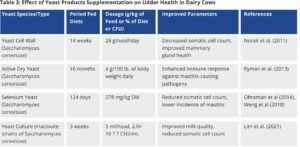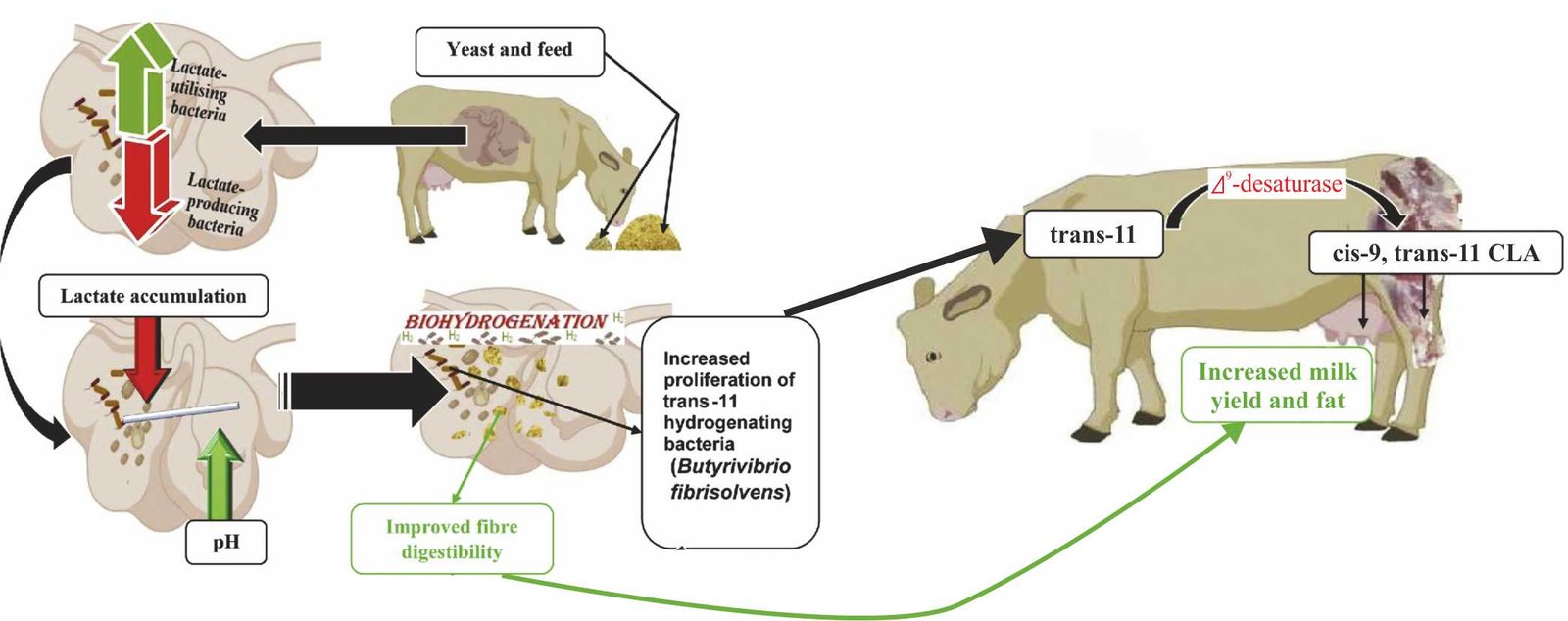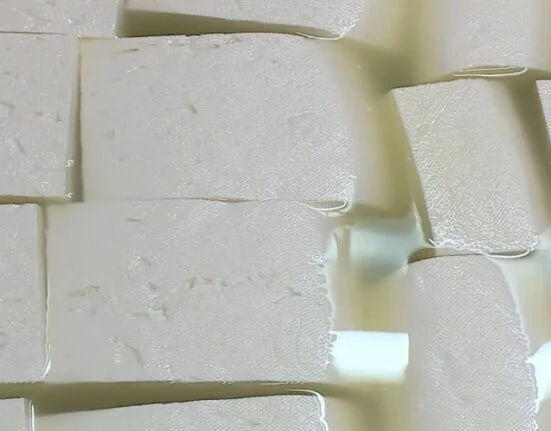 The addition of direct feed microbes can enhance feed digestion, improve animal performance, and support animal health by influencing the rumen’s digestive processes. As a result, ruminants are commonly fed various microbial feed additives. Yeast products, particularly Saccharomyces cerevisiae, have been shown to be effective in regulating rumen metabolism and improving ruminant productivity. Research suggests that supplementing yeast in the diet can improve feed intake, weight gain, digestion, and the populations of anaerobic and cellulolytic bacteria (ruminal microflora), as well as stabilize the ruminal pH.
The addition of direct feed microbes can enhance feed digestion, improve animal performance, and support animal health by influencing the rumen’s digestive processes. As a result, ruminants are commonly fed various microbial feed additives. Yeast products, particularly Saccharomyces cerevisiae, have been shown to be effective in regulating rumen metabolism and improving ruminant productivity. Research suggests that supplementing yeast in the diet can improve feed intake, weight gain, digestion, and the populations of anaerobic and cellulolytic bacteria (ruminal microflora), as well as stabilize the ruminal pH.
However, there has been ongoing debate regarding whether yeast should be fed as active dry yeast (ADY), yeast culture, or yeast cell wall. The goal of supplementing yeast in ruminant diets is to improve animal health and production efficiency, while also considering cost-effective applications.
Different Yeast Species of Importance in Animal Feeding
- Active Dry Yeast (ADY)
Active dry yeast is the most common type used in dairy and cattle feeds. It is a granular substance containing live organisms in a dormant state, with 5–20 billion live yeast cells per gram. There is a wide range of commercial ADY products available in the dairy nutrition market, each containing a distinct strain of Saccharomyces cerevisiae, with varying dosing rates and cell viability.
- Yeast Cultures
Yeast cultures are unique in that they contain both yeast biomass and fermentation metabolites produced during the fermentation process. To produce yeast cultures, live yeast cells are inoculated into a specific medium and allowed to ferment under controlled conditions. The metabolites produced depend on the media used and the fermentation conditions.
- Yeast Cell Wall
Yeast autolysates, which include both intracellular components and yeast cell wall fragments, are derived from lysed ye

ast cells using acids, enzymes, or high-salt solutions. Glucans, the principal polysaccharide component in Saccharomyces cerevisiae, form the structural support of the yeast cell wall. The innermost layer of yeast cell walls consists of insoluble β-glucan. Mannans, another significant component of yeast cell walls. Mannan oligosaccharides (MOS) act as prebiotics by serving as nutrients for beneficial microbes in the gastrointestinal tract, promoting probiotic effects.
- Specialty Yeast Products
Specialty yeast products include irradiated yeast, selenium yeast, chromium yeast, and Phaffia yeast. Irradiated yeast contains ergosterol, which transforms into vitamin D2 under ultraviolet radiation. Selenium yeast is a highly bioavailable source of selenium, sold as Selenomethionine. Phaffia yeast is known for producing astaxanthin, a red pigment.
 Which one to use in the cattle feed?
Which one to use in the cattle feed?
The mechanisms of active dry yeast, yeast cultures, and yeast culture conclude in a comparable outcome: the prevention of a decline in rumen pH or the restoration of rumen pH to more normal levels. The provision of both probiotic and prebiotic effects through yeast cultures and yeast cell walls is advantageous. A nutritional source for beneficial bacteria, in conjunction with the other nutrients included in yeast products, will undoubtedly enhance rumen function during periods of acidosis.







